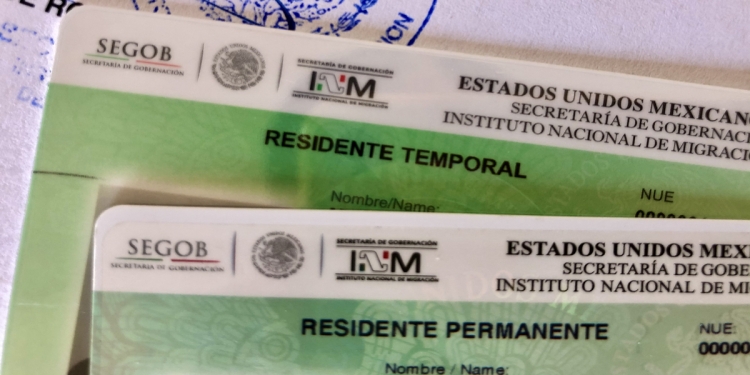The length of time that foreign residents choose to spend in Mexico each year varies, depending on their life’s situations and their lifestyle intentions.
This article explores typical profile patterns of foreign residents who come to Mexico to live and work or retire, and also describes the key considerations which influence people’s level of commitment when they come to live here.
Foreign residents’ commitment levels vary
While everyone’s situation has unique aspects, people who come to Mexico to live and work or retire tend to fall into one of these profile patterns—and reviewing these can help you to consider what level of commitment you might have.
Full-time residents, fully committed to Mexico
Foreign residents who are fully committed arrive to live and work or and/or retire full-time and settle permanently in Mexico. They usually sell their home abroad and move all their personal goods to Mexico.
They might already own a home in Mexico, or will purchase a home, perhaps renting somewhere for a time while they scout for and find the property they want to buy.
Some people might commit to Mexico this way and rent a home instead of buying; for example, if they have sufficient income to rent, but insufficient capital to buy—or if they prefer the flexibility that renting a house offers.
These types of retirees tend to visit family and friends in their home country at least once a year; and family and friends may also come to Mexico to visit them.
Our article about considering choices for accommodations in Mexico shares further insight about whether to buy or rent in Mexico.
Full-time residents, partly committed to Mexico
Foreign residents who are partly committed arrive to live and work and/or retire full-time in Mexico, but tend to keep their home and other significant assets abroad. They either rent long term or buy a home here if they don’t own a home in Mexico already.
They will likely make regular annual trips back to their home country, perhaps at certain times or seasons of the year, to be with family and friends they have outside of Mexico.
Part-time residents, living in Mexico for defined periods
Foreign residents who arrive to live and work and/or retire in Mexico part-time, for defined periods are not fully committed to Mexico and tend to hold considerable assets and perhaps work and family commitments abroad.
When and how long these types of foreign residents stay in Mexico varies, and dates and seasons might depend on individuals’ own circumstances and commitments they have ongoing here, and elsewhere.
Foreign residents who overwinter in Mexico are commonly termed as “snowbirds”—who typically arrive in November and leave in April or May of the following year. They might own or buy a home in Mexico, or they might rent a house here—and they’ll probably keep a home abroad.
Frequent shuttling or short stints in Mexico
Some foreign residents, especially (but not exclusively) those who live near the southern US border, might shuttle frequently between a home in the US and their home in Mexico.
Others might live most of their time in their home country (or another country) and live in Mexico for a short stint or stints: either for a single, defined period during the year, or through several shorter periods in weeks or months peppered throughout the year.
These types of residents will almost certainly own a home in Mexico, although some might have long term rental arrangements in place.
In years past, foreigners who arrived in Mexico to live this way would not bother getting a residency permit and stay in Mexico using a visitor permit instead. However, with changes to the way foreign visitors are admitted, it’s prudent to apply for a residency permit in Mexico.
Considerations that tend to influence commitment levels
How long you spend living in Mexico, and how much commitment you make to cultivating a life and lifestyle here, will depend on many things and is ultimately determined when you define your intentions for moving to Mexico to live and work or retire.
This section describes key considerations that tend to influence people’s decision-making. Contemplating these these as you make your own deliberations can be helpful as you think about your move to Mexico, or making changes to your current arrangements if you already live here.
Your social and family ties
The choice about whether to live in Mexico full-time or part-time is oftentimes influenced primarily by people’s social and family ties back home.
If you have strong friendships, children and grandchildren that you are close to and want to see them more often than through occasional visits, then you might choose to make Mexico a part-time living place.
Most people who live in Mexico part-time choose to live here during the months of the year when the climate is least agreeable in their home country—and for most that’s the late fall and winter months in the northern hemisphere, when foreign residents arrive to overwinter in Mexico.
Attachment to your home country
Another key influencing factor is how attached you (and your partner and family as relevant) feel to your home country.
For example, some people find the notion of selling the family home —where children were raised, and lifetime memories were engrained— difficult. It’s easier for some people to let go, and more difficult for others.
As you contemplate this, consider your partner’s feelings about the matter; as we noted in a related article about setting out your intentions for moving to Mexico, moving abroad when a one partner is enthusiastic and committed and the other is lukewarm or unpersuaded can break relationships—even long-standing ones.
The distance between Mexico and your home country
Consider how long it takes you to travel between Mexico and you home country.
If your home in Mexico is close to the US-Mexico border and your other home is in the southern US, this might be relatively inconsequential.
Conversely, if your home country is Europe or Japan, your travel time between the two countries will be substantial.
Most Americans and Canadians that fly home will have to travel for between 6-12 hours to get to/from Mexico, door-to-door. Most Europeans will need to travel for between 24-30 hours to shuttle between Mexico and their home country, door-to-door.
Aside from the time, effort and financial resources you’ll need to expend to travel between Mexico and your home country (especially if you continue to have significant ties to your homeland), there is also a psychological aspect to take into consideration that’s also related to your commitment level (see first section, above).
If you’re only living in Mexico part time and your home country is far away and you have significant commitments and attachments there, this is likely to eventually take a toll on you even if you are able to fund the continual traveling.
Logistics, financial resources, and personal energy
Persistent traveling may become more burdensome for some as they grow older.
Living part-time in Mexico and part-time elsewhere every year requires you to manage at least two sets of homes, two lifestyles, and two ‘lifestyle structures.’
The logistics become even more complex if you must rent out one house or the other as part of your income needs.
Shuttling between two countries requires considerably more financial resources and moreover it demands time and energy from you personally every time you shuttle.
Consider the impact this will have on your finances longer term and, more importantly, on your body and well-being: as we grow older, constant moving becomes less attractive, and ultimately less viable.
Offspring’s perceptions and concerns
People who come to to live, and especially those who come to retire, often have grown children (and grandchildren) living in their country of origin, or in a country other than Mexico.
Most adult children concern for their parents as they age, and if you choose to live in Mexico, it’s sensible to share those intentions with any children you have and express to them how long and what level of commitment you might make to Mexico in the longer term.
Some children might be quite comfortable with the notion of their parents living or retiring abroad in Mexico; others might see it as fancy experiment that will be short-lived, while others might express worry or fears—especially if the parents are ‘selling-up’ and moving to Mexico full time. These personal family connections can become significant influencers in the decision-making.
If you intend to commit to Mexico long-term and make Mexico your ‘primary home’ then be sure to communicate this intention with your close family; and consider the longer-term impact, including estate planning and, related to that, senior care services and end-of-life planning.
Some people retire in Mexico with the intention of living out the remainder of their lives here and if you become unable to make decisions it’s helpful to have a (legally-binding) plan in place that may prevent others from acting against your wishes and moreover facilitate the implementation of yours and your partner’s wishes. Hire a Notary Public in Mexico to talk about living wills, or consult with a professional financial advisor or attorney.
Further research and resources
Mexperience offers you a comprehensive online resource of information and local knowledge to help you discover Mexico, explore choices, find opportunities and plan a new life in Mexico.
- Articles about lifestyle planning in Mexico
- Defining your intentions for moving to Mexico
- Matching your location with your lifestyle needs
- Discovering potential places to live in Mexico
- A regular Mexico Newsletter you can subscribe to for free











